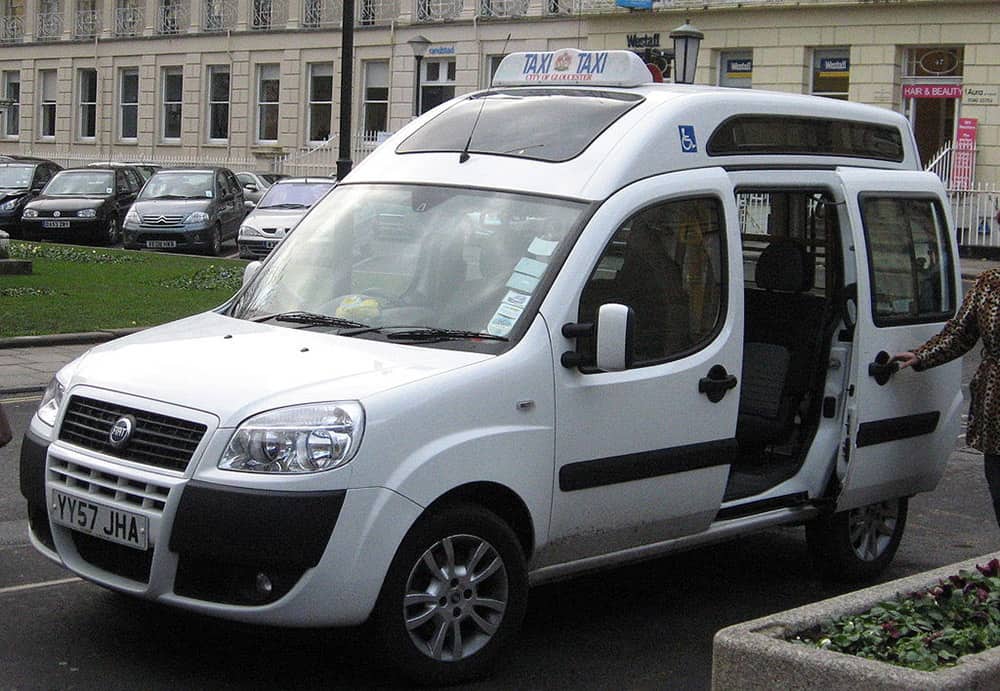86 percent of local authorities in England have less than one wheelchair accessible taxi per 1,000 people, new research shows

In the UK, 1,300 people a month search for ‘wheelchair accessible taxi’ on Google, according to data found using online visibility and marketing tool SEM Rush by Taxi2Airport.com, highlighting the need for more wheelchair accessible taxis across the UK.
In light of this, Taxi2Airport.com has analysed new data released by the UK Government to find out which cities in England have the most – and least – wheelchair accessible taxis per 1,000 people.
The aim of its research is to underline how much work is needed to improve disability-friendly transport and to help remove the barriers disabled people face when travelling.
The findings
According to Taxi2Airport.com, the top 10 cities in England with the most wheelchair accessible taxis per 1,000 people are:
- Liverpool – 2.9 accessible taxis per 1,000 people
- Coventry – 2.3 accessible taxis per 1,000 people
- London – 2.3 accessible taxis per 1,000 people
- Worcester – 2.0 accessible taxis per 1,000 people
- Manchester – 2.0 accessible taxis per 1,000 people
- Norwich – 1.5 accessible taxis per 1,000 people
- Newcastle upon Tyne – 1.5 accessible taxis per 1,000 people
- Sheffield – 1.4 accessible taxis per 1,000 people
- Plymouth – 1.3 accessible taxis per 1,000 people
- Preston – 1.3 accessible taxis per 1,000 people
Liverpool is the city with the most wheelchair accessible taxis per 1,000 people according to the research. In total, there are 1,426 wheelchair accessible taxis in this city, which equates to 2.9 per 1,000 people.
Additionally, in Coventry, there are 859 wheelchair accessible taxis, which equates to 2.3 per 1,000 people.
The third city in England with the most wheelchair accessible taxis is London. In London, there are 20,136 wheelchair accessible taxis, which equates to 2.3 per 1,000 people.
In contrast, Taxi2Airport’s research revealed that the top 10 cities in England with the least wheelchair accessible taxis per 1,000 people are:
- Lincoln – 0.3 accessible taxis per 1,000 people
- Southampton – 0.3 accessible taxis per 1,000 people
- Canterbury – 0.2 accessible taxis per 1,000 people
- York – 0.2 accessible taxis per 1,000 people
- Gloucester – 0.1 accessible taxis per 1,000 people
- County Durham – 0.1 accessible taxis per 1,000 people
- Lancaster – 0.1 accessible taxis per 1,000 people
- Bath (and North East Somerset) – 0.1 accessible taxis per 1,000 people
- Lichfield – 0.1 accessible taxis per 1,000 people
- Wakefield – 0.1 accessible taxis per 1,000 people
Taxi2Airport.com also found that 58 percent of all taxis were wheelchair accessible in 2019; the number of authorities requiring disability awareness training for taxi drivers has increased from 41 percent to 44 percent; and two-thirds of authorities require all or part of the taxi fleet to be wheelchair accessible.
However, the company’s research also highlighted that 34 percent of authorities do not require all or part of the taxi fleet to be wheelchair accessible, which could leave disabled people struggling to find a suitable transport option.
Driving Mobility’s Ann Frye OBE said: “There has been enormous progress in the UK in the last 30 years in introducing technical standards for accessibility, particularly in bus and rail. Already all buses in service must meet accessibility requirements and by the end of this year the same will apply to trains.
“Major cities also have large numbers of accessible taxis in service. There are Europe wide laws in place on the rights of disabled people in air travel. All this means that many more disabled people are travelling.
“However, there are still many barriers to overcome including: lack of information about what is available and possible; lack of training so that front line staff do not always understand the needs of a disabled person; a general lack of understanding still about the needs of people with hidden disabilities including mental health conditions, autism and dementia who can be very challenged by the transport environment.
“And of course, in rural areas there is often no public transport available so people need to rely on continuing to drive or seeking support from family and friends which can obviously undermine independence and spontaneity.”

